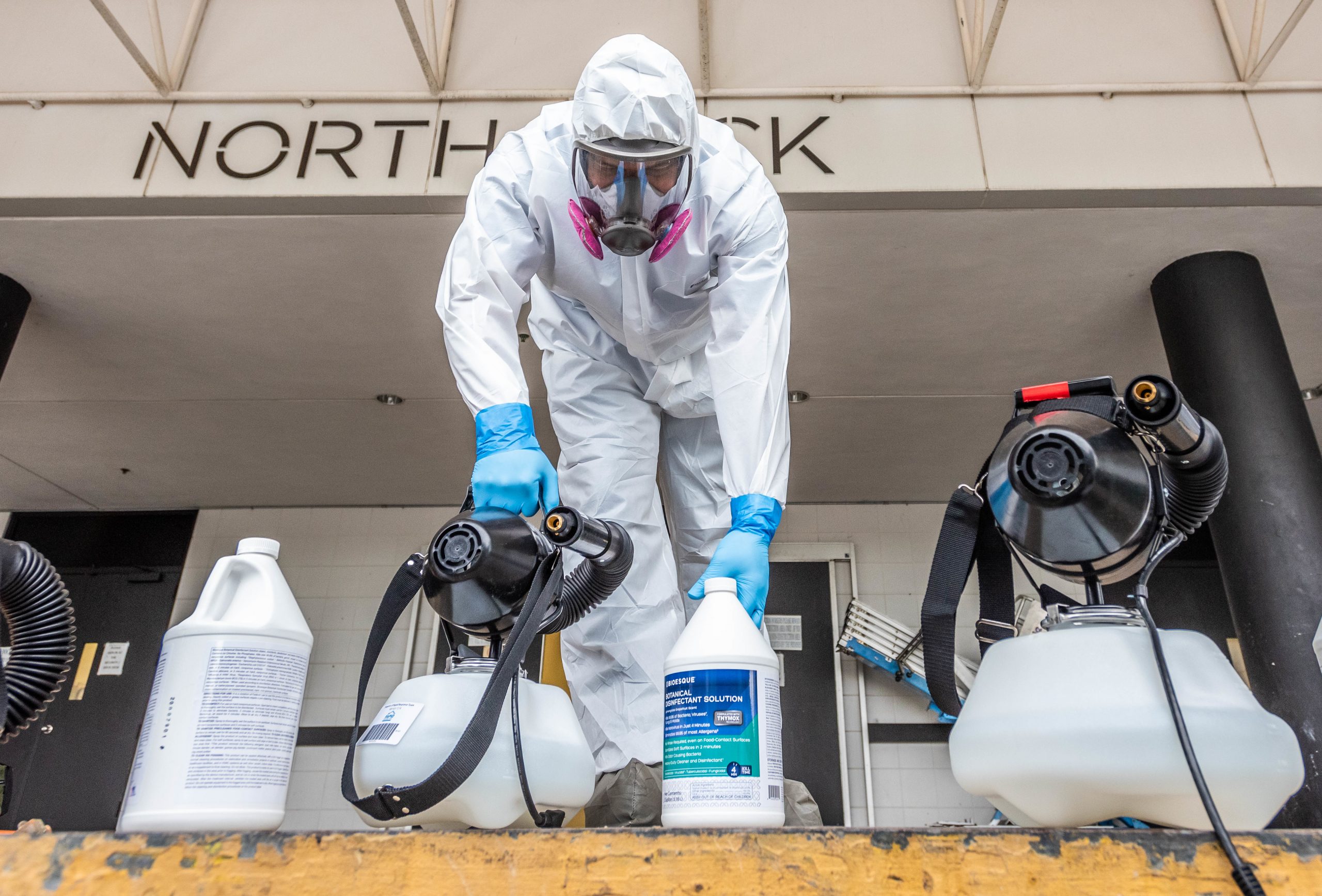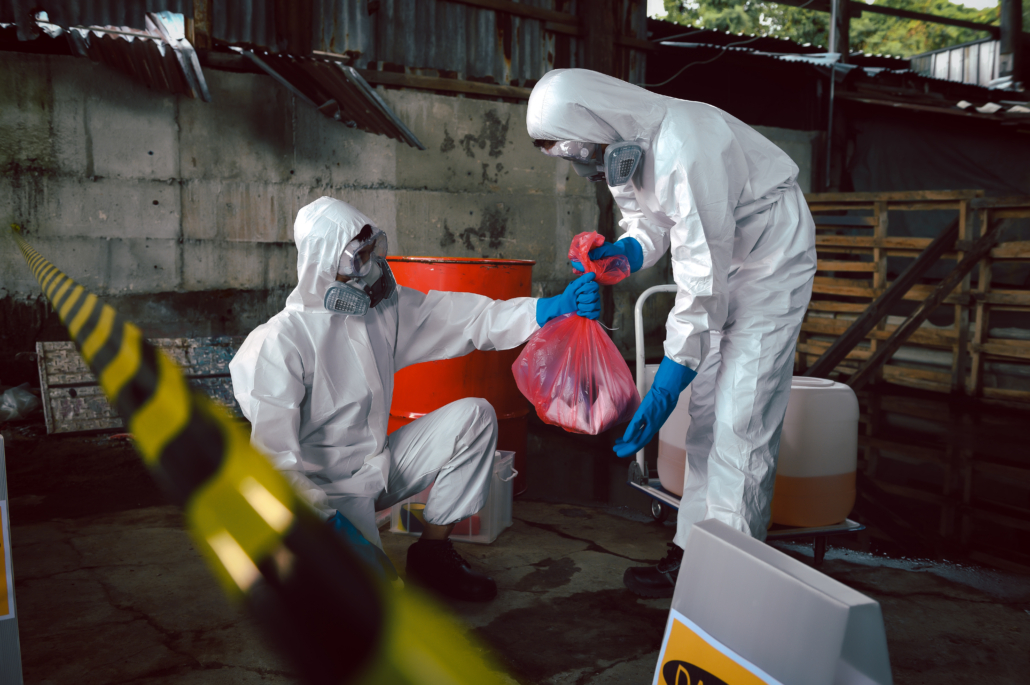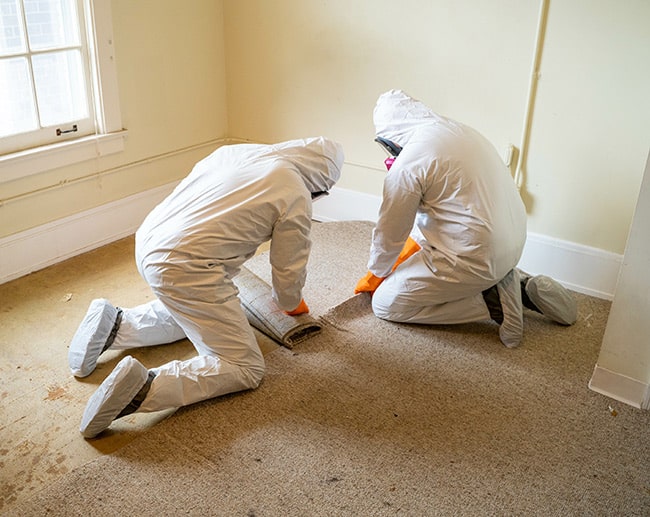Expert Homicide and Suicide Cleanup: Compassionate and Discreet Services
Expert Homicide and Suicide Cleanup: Compassionate and Discreet Services
Blog Article
Professional Biohazard Cleaning for Criminal Offense Scenes, Trauma Incidents, and Infected Spaces
In the realm of specialist biohazard clean-up, precise focus to information and adherence to safety and security methods are extremely important. As we dig right into the details of biohazard cleaning for these sensitive atmospheres, a much deeper understanding of the difficulties and vital treatments involved will certainly arise, dropping light on the crucial role of expert cleaning services in restoring safety and security and peace of mind.

Importance of Biohazard Cleaning
Biohazard clean-up complying with criminal activity scenes and injury incidents is important for ensuring the safety of individuals and the setting. When these occurrences take place, they typically leave behind a variety of biohazards such as blood, physical liquids, and other potentially contagious products. These substances can nurture harmful virus like infections and microorganisms, posing major wellness dangers if not effectively cleaned and disinfected.
Expert biohazard cleaning solutions are trained to manage these hazardous materials safely and efficiently. They have the needed tools, such as individual protective equipment and specialized cleansing agents, to extensively sanitize the influenced locations. By handing over the clean-up to skilled specialists, individuals can avoid direct exposure to damaging microorganisms and avoid the spread of infectious diseases.
Moreover, appropriate biohazard clean-up is important for securing the atmosphere. Improper disposal of biohazardous materials can pollute dirt, water sources, and air, positioning a danger to wild animals and the ecological community. By following stringent cleaning procedures, specialists can ensure that biohazards are safely removed and taken care of in conformity with guidelines, lessening the danger of ecological contamination.
Sorts Of Biohazards Encountered
Numerous unsafe materials commonly experienced in criminal offense scenes and trauma incidents present considerable health risks otherwise dealt with effectively. Blood and physical fluids are among one of the most usual biohazards located in these circumstances. These liquids can carry pathogens such as HIV, liver disease B and C, and various other unsafe microbes. Furthermore, cells, body organs, and body components can likewise position significant health threats as a result of possible contamination.
An additional sort of biohazard commonly encountered is sharp objects like needles, damaged glass, and various other items that can cause injuries and send infections. Chemical risks are also an issue, as criminal offense scenes may consist of substances like tear gas, pepper spray, or medication manufacturing materials that require customized handling and disposal treatments to stop additional harm.
Moreover, mold and bacteria development can take place in spaces where decomposition or long term direct exposure to moisture has actually taken place. These microbes can launch contaminants and allergens into the air, posing respiratory system dangers to those exposed. In general, biohazard cleaning specialists should be experienced and fully equipped to properly deal with these different sorts of unsafe products to make sure the safety and security of themselves and others.
Equipment and Safety Equipment
When dealing with the important task of managing biohazards encountered in criminal activity scenes and injury incidents, the use of correct equipment and safety equipment is extremely important to guaranteeing the safety of individuals included in the clean-up process. Specialized cleansing tools like biohazard sharps, disinfectants, and bags containers are required for the risk-free collection and disposal of contaminated materials. Making certain that all devices is effectively preserved, on a regular basis checked, and utilized according to security guidelines is essential in decreasing the threat of direct exposure to biohazards throughout clean-up procedures.
Cleanup Process and Techniques
Reliable and detailed cleanup of biohazardous products from crime scenes and trauma incidents requires thorough attention to detail and adherence to rigorous security protocols. The cleaning process normally entails a number of key steps.
Complying with the removal of biohazardous products, the afflicted location undertakes an extensive cleaning and disinfection process. This action includes the usage of specialized cleaning up agents and equipment to make sure that all traces of contamination are removed. After cleansing, the area is subjected to strenuous screening to confirm that it is secure and totally free of any type of staying biohazards.

Decontamination and Disposal Treatments
To make sure comprehensive decontamination and proper disposal of biohazardous products, complying with the thorough cleaning procedure, details procedures have to be thoroughly adhered to with strict adherence to safety and security procedures. Decontamination entails the elimination or neutralization of impurities to minimize the threat of exposure and spread of dangerous compounds. This procedure normally includes cleansing, sanitizing, and sterilizing the affected area utilizing specific devices and EPA-approved chemicals.
Once decontamination is finished, proper disposal of biohazardous materials is essential to stop additional contamination or damage. Biohazardous waste, such as bodily fluids or blood-soaked products, have to be meticulously accumulated, packaged, and classified according to governing standards. ATP testing. These products are then carried to licensed centers for disposal with appropriate networks, making certain conformity with neighborhood, state, and government policies

Conclusion
To conclude, specialist biohazard cleaning is important for guaranteeing the safe and reliable removal of dangerous products from crime scenes, injury incidents, and infected rooms. By utilizing specialized devices, safety gear, and adhering to correct cleaning processes and strategies, biohazard cleaning groups can successfully sanitize and get rid of of biohazards, reducing the danger of exposure and harm to individuals and the setting.
As we dig right into the ins and outs of biohazard cleaning for these sensitive environments, a deeper understanding of the challenges and essential treatments involved will emerge, losing light on the essential role of professional clean-up solutions in bring back security and peace of mind.
Expert biohazard clean-up services are trained to deal with these dangerous products additional reading safely and efficiently. By complying with strict clean-up procedures, experts can make certain that biohazards are securely gotten rid of and disposed of in conformity with policies, decreasing the risk of environmental contamination.
Overall, biohazard cleanup specialists have to be well-equipped and trained to efficiently take care of these various types of hazardous products to guarantee the safety of themselves and others.
When dealing with the vital job of dealing with biohazards encountered in criminal activity scenes and trauma occurrences, the use of appropriate equipment and safety gear is vital to ensuring the security of individuals included in biohazard cleanup article the cleaning process.
Report this page